FERNS
Among ferns we find numerous beautiful shapes and forms that deserve a place in the garden. I describe the most striking and interesting species in my opinion which also can be found in our garden. An annually changing assortment is for sale at the nursery.

Adiantum pedatum, maidenhair fern (Japan, 30-40cm) is one of the finest ferns. The fine textured, light green leaves of this species are ranked by black veins in a fan shape on the petiole. Adiantum prefers a sheltered place in (semi) shade on a humus-rich, moist soil. This maidenhair is deciduous. We have applied this species several times as undergrowth of Albizia as a repetition of the leaf form in the undergrowth. Very nice to plant in groups. A rare evergreen species is Adiantum venustum.
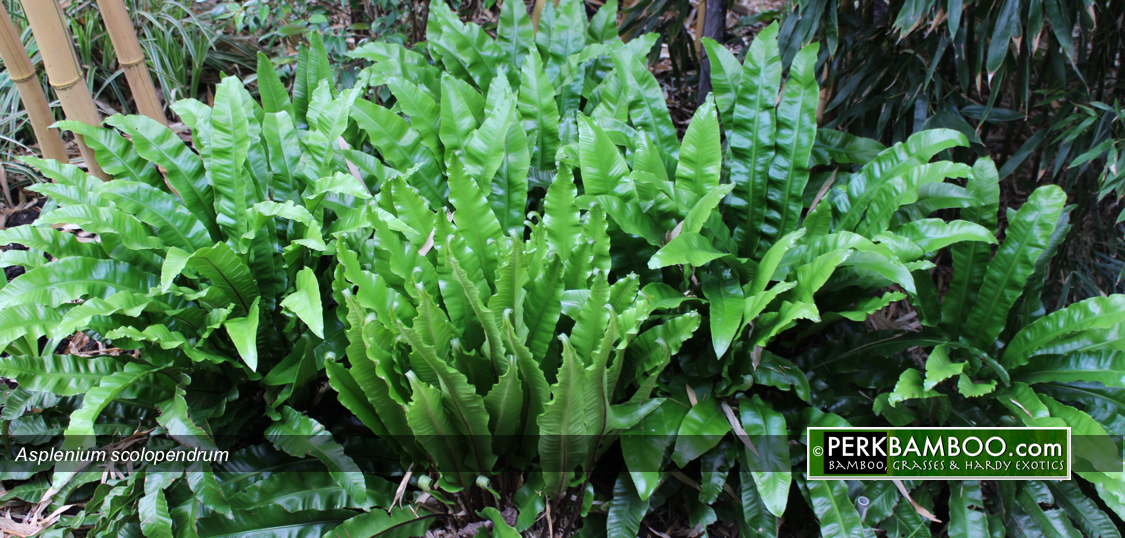
Asplenium scolopendrium, tongue fern is an essential plant for exotic gardens, this evergreen tongue fern is a hardy counterpart to the tropical nest fern. Very nice to apply in groups. This species eminently lends itself well as an epiphyte, growing in old tree stumps, between rocks and stone walls. Breathtaking to see the unrolling of new leaves in spring. The shiny, leathery leaves grow upto 30-50 cm high, depending on the location. Usually there are also interesting cultivars available such as the narrow-leaved form ‘angtustifolia’ and ‘cristatum’.
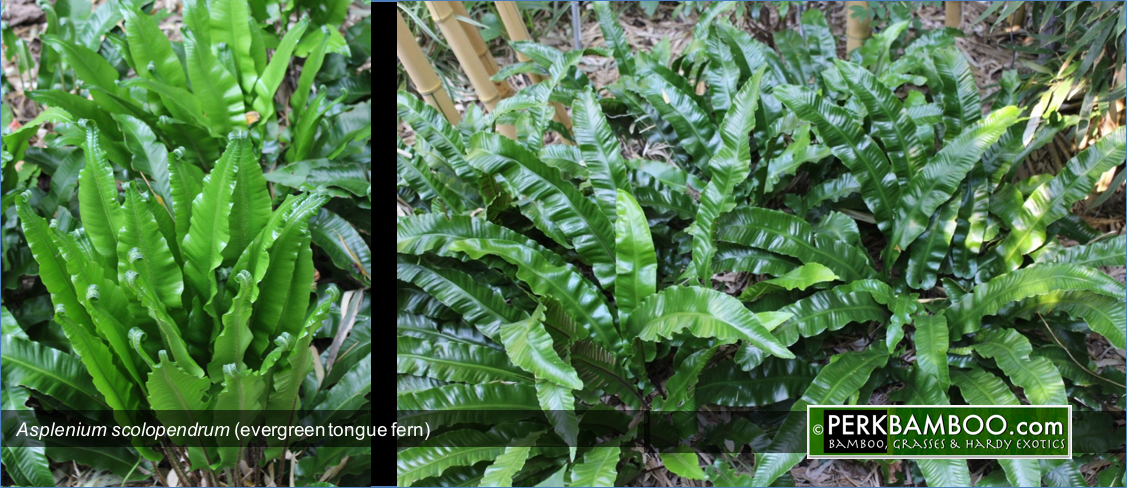
Athyrium nipponicum, Japanese rainbow fern (deciduous, 30cm) is usually available in several cultivars such as 'Pictum','Red Beauty’ and 'Metallicum'. A selection which sustains its pretty silver-purple spring colors to the end of the season is 'Burgundy Lace' (limited available).

Dicksonia antarctica is the strongest tree fern and a very beautiful architectural plant for a sheltered spot in the garden. It is not an easy plant; they do not tolerate heavy frost and prolonged dry weather. Additional protection is definitely required. Since 2008 I have two Dicksonia’s in my private garden. During dry periods, I spray the trunk and crown daily. The foliage is evergreen down to-5 to -8. Sometimes at the nursery also other tree ferns are available such as Cyathea.

Dryopteris sieboldii is a unique Asian evergreen fern with thick, leathery lobed leaves. The plant spreads slowly with short rhizomes. The large, blue-green lobed leaves give a tropical effect.
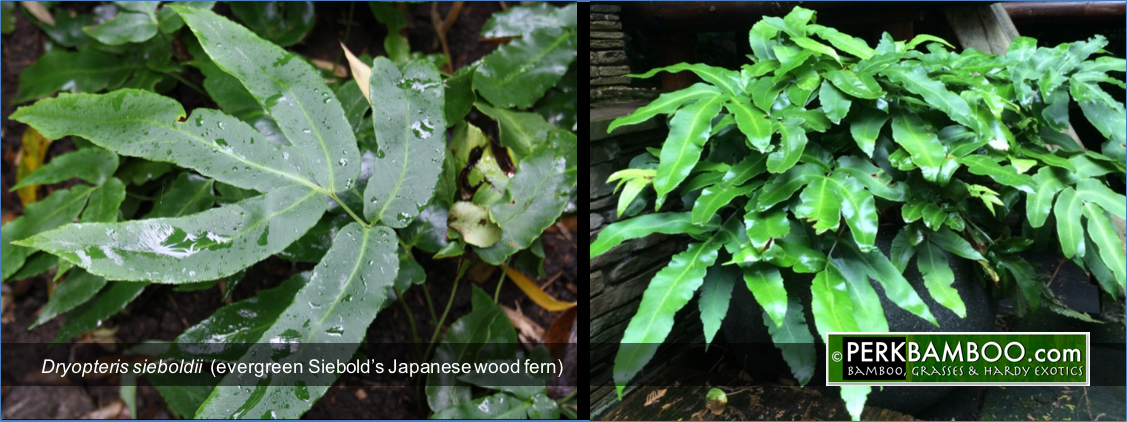
Leptinella 'Platt's Black' is a low, evergreen ground cover from New Zealand and Tasmania with a very fine, fern look-a-like leaf structure. In summer Leptinella blooms with small copper yellow flower buds between the leaves. The plant is about 5 cm high. 'Platt's Black' is a dark-selection and above all beautiful ground cover and an edger between, for example stones. Leptinella prefers a moderately moist, humus-rich soil in sun to partial shade.
Lophosoria quadripinnata from Chile and Argentina is a tree fern but with a creeping rhizome. Its very attractive, fine textured leaves are silver blue underneath. Lophosoria can grow upto 1 to 1.5 meters under favorable conditions. Sometimes available.
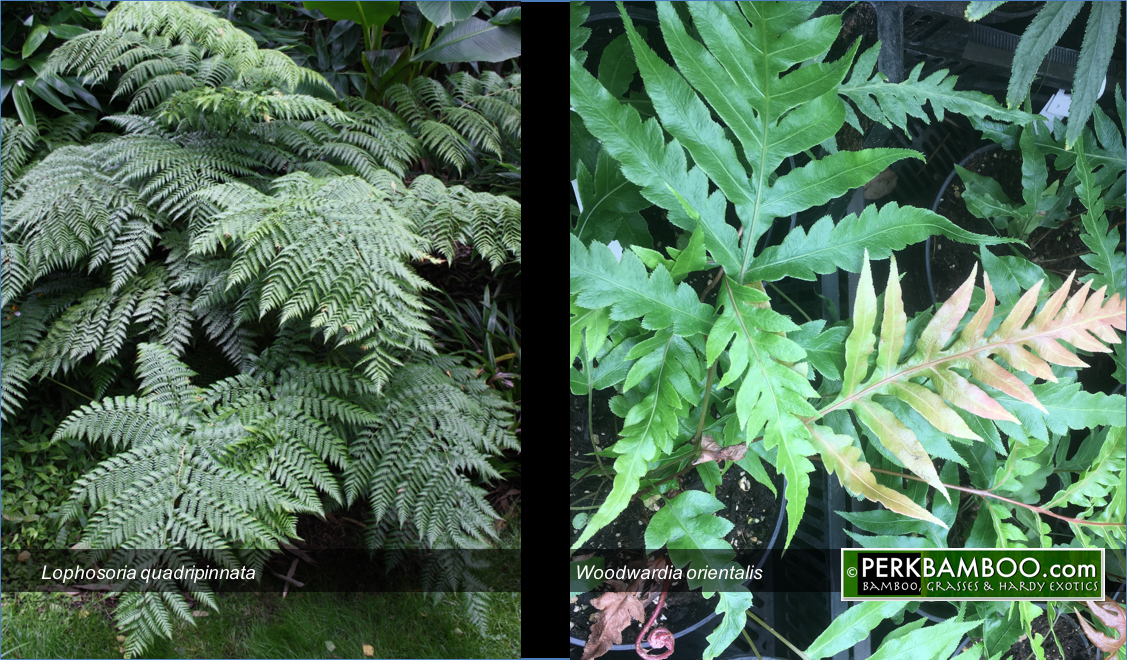
Polystichum 'Herrenhausen' is an elegant German selection with bright green and slightly curled leaves. This fern loves a sheltered site in partial shade or shade and well drained, humus-rich, moist soil. Effective to plant in groups.
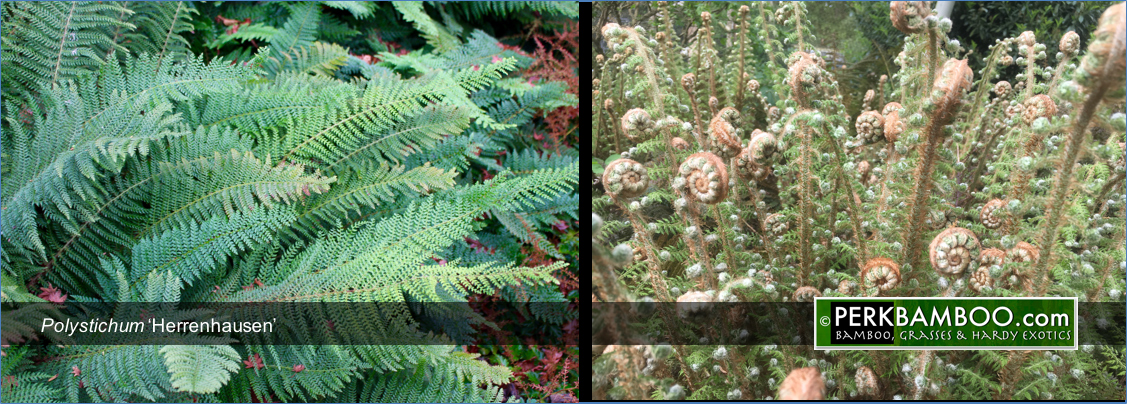
Polystichum polyblepharum, Japanese shield shield fern, is one of the best evergreen ferns and between 40 and 60 cm high, depending on the location and prefers a moist, humus-rich soil in the (semi) shade. Typically, the glossy green leaves of this plant keep their fresh look in winter. Several times a year there is a leaf flush. A stunning species to apply it in groups or mixed in the under growth of a shadow border. It can cope with a sunny location too.
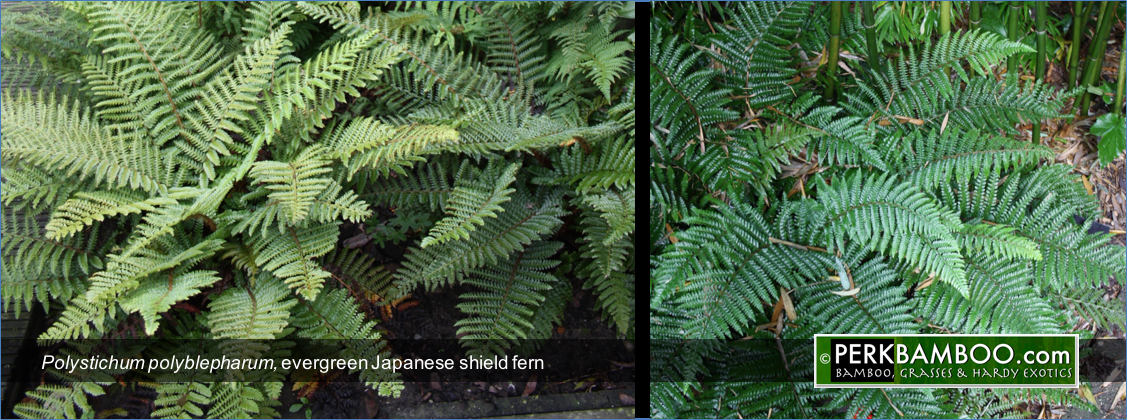
Pteris wallichiana is an exotic looking fern from the Himalaya region and spreads via rhizomes quite easily. The large dark green fronds can reach a height of 1-1,5 meters, depending on the location. A sunny, moist and well draining soil will help achieve the best results. This fern has proven far hardier than expected (not available at the moment).
Woodwardia radicans, the evergreen chain fern occurs in cool forests on the Canary Islands. W. radicans makes big leaves topped with breeding tubers. It is an imposing appearance for a protected, sheltered spot. Protect from heavy frost. Momentary we have in observing the new species Woodwardia orientalis (few plants available for sale)
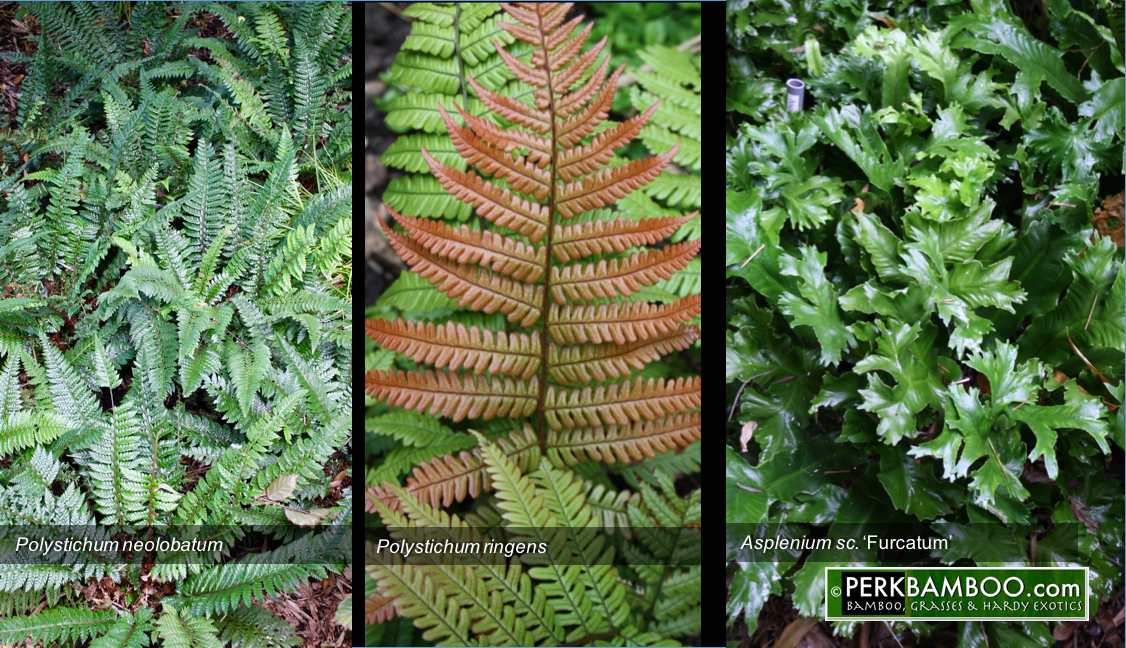
Equisetum heymale 'Robustum' and E. ramossissimum var. Japonicum are botanically speaking ferns. However, the appearance is totally different. The Japanese horsetail
makes leafless stems with a bamboo-like appearance. That makes it very decorative and stylistic plants. ‘Robustum’ is the largest species and can grow more than 1.5 m high. ‘Japonicum’ remains smaller.


